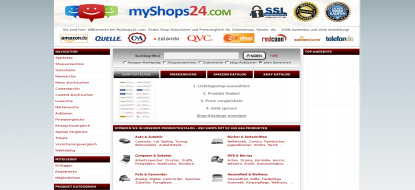USABILITY ANALYSIS
Just about every week we're running a usability test on ecommerce website.We've watched thousands of users attempt tasks across dozes of websites, small and large.
Most ecommerce website owners want to know how they can improve their user experience, conversion rates and sales. While we can't speak to business models (pricing, product selection and service) we can speak to the most common issues we've seen when users are asked to locate a specific product.
-
 Show total costs before checkout, round up, estimate shipping and tax or find a way to show it to the user as soon as possible. In our studies with users, not knowing the final price on checkout is a deal breaker. Surprises are great on our birthday but not in the checkout.
Show total costs before checkout, round up, estimate shipping and tax or find a way to show it to the user as soon as possible. In our studies with users, not knowing the final price on checkout is a deal breaker. Surprises are great on our birthday but not in the checkout. - Minimize registration or avoid it altogether if you can. Must you require a username, a password, a confirmed password, a home phone? Yes you need shipping information and it's nice to save all this for a return purchase, but most websites are not Amazon and users don't think they'll return. They just want their Halloween costume, luggage, dress, flowers or furniture now and will think about registration later.
- Save form information! While security is always a balance, we've watched dozens of users meticulously type their information into well crafted forms but when they want to add something else to their cart or double check a price they come back to the checkout form and all information is gone!
- Left Rail Filter Auto Updates: For retail websites the left rail has become a prime location for filtering on brand, size, price, color, manufacturer… you name it. When users click on a filter they expect the page to change immediately (no submit button) and they expect to see relevant products (don't make them scroll up to see the only 2 products that match their search).
- Don't Make Users Guess on the input format: This is "Forms 101"--don't make your users click a pop-up or link to see what format you need...yet it still happens too often. Is the birthday format MM/DD/YYYY, DD/MM/YYYY, MM/DD/YY ? We've seen a lot of these on new mobile apps. It's understandable--new platforms, new problems, except users will give you the information if you tell them what you want!
- Search is bad and frustrating : Most people start browsing on websites, but for product rich ecommerce websites the search rate is higher (often above 40%) depending on the item and task. Users treat any prominent text field as a search box (like newsletter signup fields). They will look for products, support and store-locations all in one place. Most users state their reluctance to search is because they expect the site search to generate too many or too few items or is too unforgiving with alternate names and misspelling. Search is hard to do well, but becomes a differentiator when done right (for example, type-ahead suggestions are extremely helpful).
- Top Navigation Dominates: When users browse, they start at the top. Users love the navigation choices displayed across the top-navigation menu. This space if free from advertising, promotions and marketing fluff—it helps get users closer to why they came—products or information. When we look at our click-maps and videos of users we see them both making the first click and subsequent clicks in the top navigation. It's all the more reason to get the labels and categories right through card sorting and tree-testing.
- User Reviews Matter: Users judge both the value and credibility of a website based on the quality and quantity of the user reviews and ratings. Whether it's for products, restaurants, accountants, lawyers or hotels, if the reviews are skimpy and seem controlled to only let in the favorable ones then the everyone loses. We've given users money to spend and purchase any product and watched as some leave the website to research the product on Amazon, read the more credible user reviews, then purchase the product on the website we're testing. Why? Because they trust Amazon's reviews more than the website we're paying them to purchase on. Most users are savvy enough to filter through the irrelevant reviews and get to the ones that matter.
- Don't make it hard for people to pay their bill: Don't require users to register to pay, do you really need users to find a 12 digit alpha numeric number to pay their bill? Take the money then ask for registration! Default to the full amount, save information, encourage autopay, provide a giant pay-bill option on the home page. Of all things, this should be about the easiest thing to do, but unfortunately it isn't. Probably the only thing worse would be asking for 1 of 3 impossible to remember alphanumeric digits to pay your bill.





